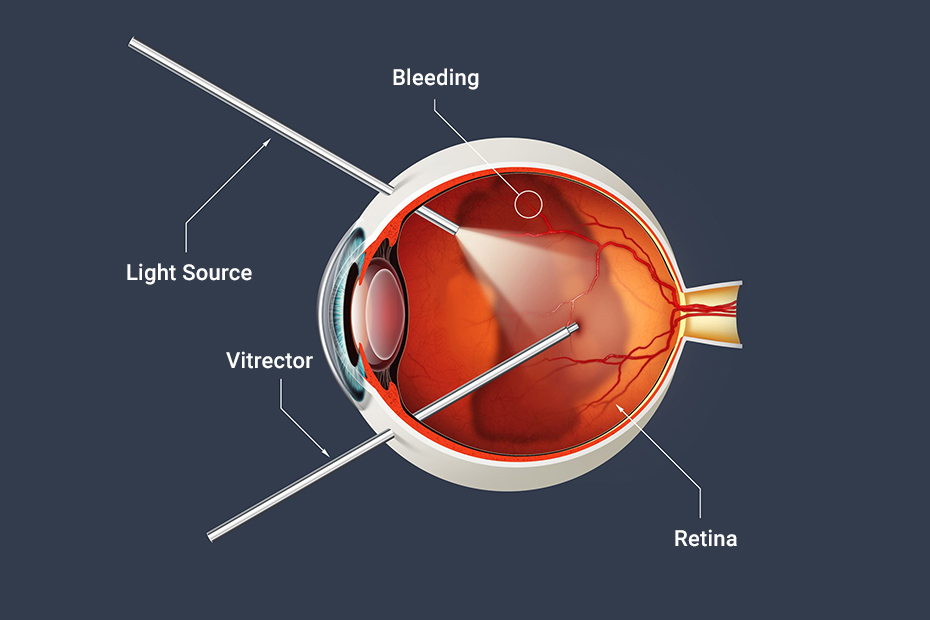- On this page: How is it Performed?
- What is Expected After?
 Micro-incisional vitrectomy is a surgical procedure performed to address retinal conditions affecting the vitreous, the gel-like substance in the middle of the eye, and the retina, the light-sensing layer at the back of the eye. Vitrectomy can treat conditions such as:
Micro-incisional vitrectomy is a surgical procedure performed to address retinal conditions affecting the vitreous, the gel-like substance in the middle of the eye, and the retina, the light-sensing layer at the back of the eye. Vitrectomy can treat conditions such as:
During a micro-incisional vitrectomy, the surgeon may remove blood, scar tissues, and foreign bodies or repair a detached retina. The surgeon will remove a portion or the entire vitreous and replace it with a saline solution or gas bubble. Over time, the eye naturally replaces the saline solution or gas bubble with its own fluid.
Vitrectomy surgery is performed in the operating room as an outpatient procedure. The retina surgeon will decide the type of anesthesia, either local or general, based on your specific case.
During the procedure, the surgeon will insert small instruments into the sclera, the white part of the eye. To gain a clear view inside the eye, a microscope will be employed. The surgeon will then remove the affected vitreous, along with any blood, scar tissue, or foreign objects present. Alternatively, they may reposition the retina or introduce an oil or gas bubble.
Following the procedure, you will be closely monitored as you recover from anesthesia. The medical team will ensure that you are comfortable and provide the necessary care during this period.
After surgery, patients may experience the following for a few days:
The retinal surgeon may prescribe medication to treat these symptoms and reduce the risk of infection.
It is important to follow the retina specialist’s aftercare instructions. Patients will need to arrange for someone to drive them home after surgery. They may also need to wear an eye patch for a day or two. Patients should avoid driving and physical exertion until cleared by their surgeon.
Visual results vary depending on the underlying retinal condition; however, many patients do experience improved visual acuity following the procedure.
Although vitrectomy is considered safe for most patients, there are certain risks associated with the procedure, including:
Cataract formation is often accelerated in patients who have not previously had cataract surgery.
Patients should call their physician if they experience any of the following after a micro-incisional vitrectomy:
Download Patient Instructions for Care after Retina Surgery.